Historical villages
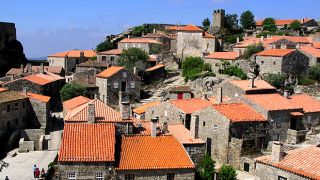
Don't miss
- walk through the narrow streets of Piódão and spot the blue windows and doors
- go paragliding in Linhares da Beira
- taste the "sardinhas doces" of Trancoso (sardine-shaped sweets)
- admire the ruins of the castle and the old Town Hall in Marialva and the Castelo Rodrigo Palace
- walk the star-shaped walls of Almeida
- discover the faces of Mendo and Menda on two houses in Castelo Mendo
- discover the history of Belmonte at the interactive Museum
- rest at the Chafariz da Bica fountain in Castelo Novo and enjoy the architecture of the town square
- discover the various stages of construction of the Cathedral in Idanha-a-Velha
- bring a tambourine or a rag doll from Monsanto
Historical villages of granite and schist preserve memories of ancient conquests and traditions and are remarkable for their landscapes, their heritage and for the friendliness of the people who live there.
Perched on the top of mountains, they can be spotted from afar by the tall towers of their mediaeval castles. That is why they were strategically aligned along the border. The kings and lords of the land knew this would mean they could sleep more restfully. But they were sometimes mistaken. Moors and Christians, Spaniards and Portuguese, all tried to take them for themselves and so each has a very ancient history or a tale to tell. Today they are peaceful and preserve in the street cobbles and the stone of the houses the real Portugal: the authenticity of its people and a proud 900-year long history.
There are twelve in total, and to discover them, we suggest a route that starts in the only place where there is no castle to visit - Piódão. The village sits on a slope hidden in the wilds of the Serra do Açor, and maybe this was why it was not necessary to fortify it. The visit involves a long walk because there is no other way to pass through these narrow streets that wind between the houses of schist.
In Linhares da Beira, in Serra da Estrela, the highlight is the castle built on a plateau, providing a lookout point over the horizon. But you must also see the Romanesque parish church, which still has some panels attributed to Grão Vasco, an important 16th century painter. The historic centre of Trancoso is surrounded by mediaeval walls and has a Jewish quarter where Hebrew symbols can be seen engraved on the stones of the houses.
Marialva was an important military post in the Middle Ages, and Castelo Rodrigo preserves the ruins of another fortress with the marks of a history of struggles and betrayals. Seen from the air, the walls of Almeida form a twelve-pointed star that you can cross from one end to another. This solid defensive structure was built in the 17th century transforming a mediaeval village into a stronghold. In Castelo Mendo, another fortified village, figures can be found representing the mayor who gave his name to the village, and his wife, carved in the stone of two houses.
Belmonte, austere in its granite architecture, was the birthplace of the navigator Pedro Álvares Cabral, who discovered Brazil in 1500, and welcomed Jews expelled from Castile in the 15th and 16th centuries, and there is still an active community that attends the synagogue. At 760m above sea level, Sortelha sits on a rocky escarpment that forms a ring surrounding the village. The view from the castle tower is breathtaking.
In Castelo Novo, which has some fine examples of manor houses, the Town Hall, and Jail and the Baroque style D. Joao V Fountain are notable. In Idanha-a-Velha you can see the ruins of the ancient Egitânia and the Visigoth cathedral. Right next door is Monsanto, which has been called the "most Portuguese village in Portugal", an award that is commemorated by the silver rooster on top of the Lucano Tower. This is the last village on this tour and here it is normal to wonder if the house is born from the rock or the rock arises out of the house, so perfect is its integration into the landscape.
To organise your trip better, take a look at the offers of activities and accommodation that the Historical Villages have for you at www.aldeiashistoricasdeportugal.com











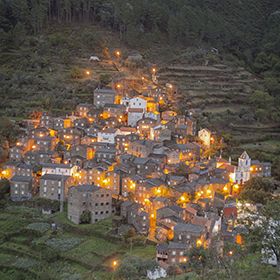
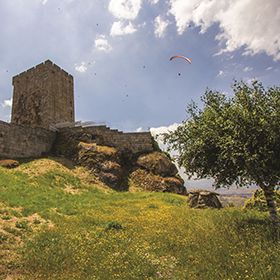
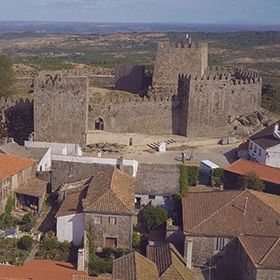

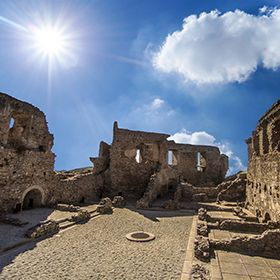
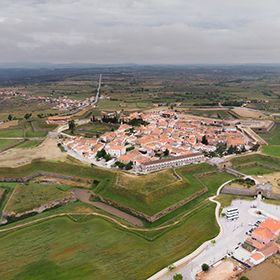



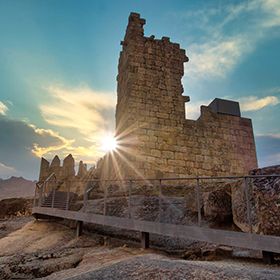
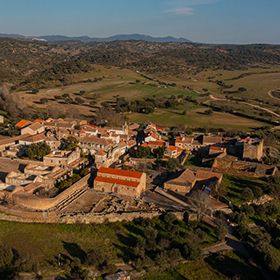
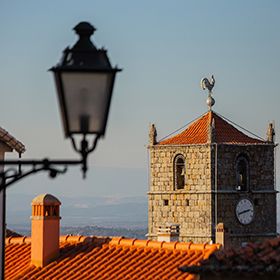


 Explore
Explore 
 Remember and Share
Remember and Share 


